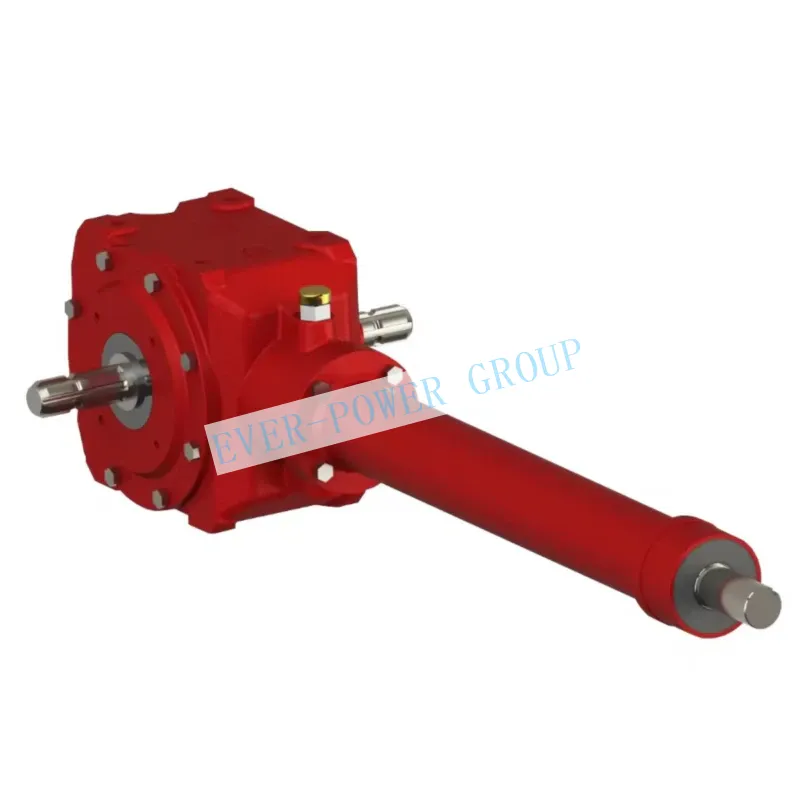Load-bearing capabilities of agricultural gearboxes
Introduction:
Agricultural gearboxes play a crucial role in various farming machinery, ensuring the smooth operation and efficiency of equipment. Understanding the load-bearing capabilities of these gearboxes is essential for farmers and manufacturers alike. In this article, we will delve into the intricacies of agricultural gearboxes and explore their load-bearing capacities in different scenarios.
1. The importance of load-bearing capabilities
Load-bearing capabilities refer to the maximum load that an agricultural gearbox can withstand without compromising its performance or leading to failure. It is a critical factor in determining the gearbox’s durability and longevity.
When it comes to agricultural machinery, such as tractors, harvesters, or tillers, the gearbox needs to handle various loads and torque requirements during operation. The load-bearing capacity ensures that the gearbox can withstand these demanding conditions while maintaining optimal functionality.
2. Factors affecting load-bearing capabilities
Several factors influence the load-bearing capabilities of agricultural gearboxes:
2.1 Gearbox design
The design of the gearbox plays a significant role in its load-bearing capacity. Factors such as gear size, tooth profile, material selection, and lubrication system all contribute to the gearbox’s ability to handle heavy loads.
For instance, gearboxes with precision-cut gears and high-quality materials exhibit superior load-bearing capabilities compared to those with subpar design and construction.
2.2 Lubrication and cooling
Proper lubrication and cooling are crucial for maintaining the load-bearing capabilities of agricultural gearboxes. Insufficient lubrication or inadequate cooling can cause excessive friction and heat buildup, leading to premature wear and potential failure.
Regular maintenance, including oil changes and ensuring proper ventilation, is essential to optimize the load-bearing performance of gearboxes.
2.3 Operational conditions
The operational conditions under which agricultural gearboxes are used directly influence their load-bearing capabilities. Factors such as the type of terrain, application-specific demands, and working hours all impact the load-bearing capacity.
It is important to consider these factors when selecting a gearbox for a specific agricultural application to ensure it can withstand the intended workload.
3. Load-bearing testing and certification
Manufacturers subject agricultural gearboxes to rigorous load-bearing tests to determine their maximum capabilities. These tests involve simulating real-world operating conditions and measuring the gearbox’s performance under different loads and torque levels.
Once a gearbox passes the testing phase, it receives certification indicating its load-bearing capacity, allowing farmers and equipment manufacturers to make informed decisions.
4. Q&A Section:
Q1: How can I determine the load-bearing capacity of a specific gearbox model?
A: The load-bearing capacity of a gearbox model can typically be found in the product specifications provided by the manufacturer. It is important to consult these specifications and choose a gearbox that matches the intended workload.
Q2: Can exceeding the load-bearing capacity damage the gearbox?
A: Yes, exceeding the load-bearing capacity can lead to increased wear, overheating, and eventual gearbox failure. It is crucial to operate within the specified load-bearing limits to ensure the longevity and optimal performance of the gearbox.
Q3: Are there any maintenance practices to enhance load-bearing capabilities?
A: Regular maintenance practices such as proper lubrication, cooling, and timely replacements of worn-out components can significantly enhance the load-bearing capabilities of agricultural gearboxes. Following the manufacturer’s maintenance guidelines is recommended.
Conclusion:
Understanding the load-bearing capabilities of agricultural gearboxes is essential for efficient and reliable farming operations. Factors such as gearbox design, lubrication, and operational conditions all contribute to the load-bearing capacity. By selecting gearboxes with appropriate load-bearing capabilities and following proper maintenance practices, farmers can optimize the performance and longevity of their equipment.
Please check out the following images:

Image URL: https://img.jiansujichilun.com/cy-07.24/Images/agricultural-gearboxes/ep-app.webp
Company Introduction:
Our company is a leading player in the Chinese gearbox market. We specialize in manufacturing a wide range of high-quality agricultural gearboxes, mower gearboxes, replacement comer gearboxes, tiller gearboxes, greenhouse motors, and more. With 300 sets of advanced CNC production equipment and fully automated assembly facilities, we are dedicated to delivering premium products and excellent service.
Promotion of Our Products:
We take pride in offering top-quality products, competitive prices, and attentive service. Customers are welcome to customize their orders based on their specific requirements. Please feel free to provide us with your designs or samples for customization.
Please check out our factory image:

Q&A:
Q1: Can agricultural gearboxes handle heavy loads?
A: Yes, agricultural gearboxes are designed to handle heavy loads typically encountered in farming operations. However, it is crucial to select the appropriate gearbox with the required load-bearing capacity for specific applications.
Q2: What happens if a gearbox exceeds its load-bearing capacity?
A: Exceeding the load-bearing capacity of a gearbox can result in accelerated wear, increased heat generation, and eventual failure. It is essential to operate within the specified load limits to avoid damaging the gearbox.
Q3: How often should agricultural gearboxes be maintained?
A: Regular maintenance is crucial for optimizing the load-bearing capabilities of agricultural gearboxes. It is recommended to follow the manufacturer’s maintenance guidelines and schedule periodic inspections, lubrication, and component replacements as necessary.